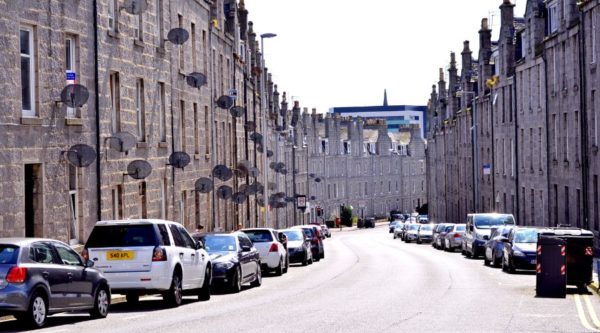

SSE hydrogen van trial achieves 400-mile range
SSE has completed a four-week trial of a First Hydrogen fuel cell van as it looks at options to decarbonise parts of its fleet that are not suitable for battery electric vehicles.
The 3.5-tonne prototype van was used by staff at SSE’s Aberdeen site, which is opposite a hydrogen refuelling station. While the Rivus trial was conducted in urban areas with largely flat routes, this time the vans had to tackle longer journeys and higher speeds as well as lower mileage city routes.
The routes around Aberdeen were hilly, and the journeys carried out in a variety of warm and cold weather and on various road surfaces with an assortment of full and partial loads.
____________________
Related reading:
Hydrogen wins big with billions in EU Innovation Fund grants
____________________
“We don’t have anything for the Transit van size that can meet zero emissions and is suitable to undertake some of the duty cycles we are running in operational areas such as Aberdeen,” said Simon Gray, SSE head of fleet services, who has overseen the transition of 40% of the company’s 3,000-strong fleet to battery electric.
The trial provided both SSE and First Hydrogen with data about performance under a variety of payloads, refuelling times, downtime and driving distances. It was the first time that the First Hydrogen vans were used by a company carrying out a daily work schedule.

SSE begins van trial around Aberdeen to test hydrogen-fuel cell delivery and logistics.
Some of the results were surprising, with fuel efficiency exceeding expectations, particularly on the higher speed, longer distance journeys. Across all routes with a nearly full load, hydrogen consumption was 1.58kg/100km, giving the vehicles a range of 630km (392 miles), higher than the 373-mile pre-demo testbed figures. On longer routes, efficiency peaked above 400 miles.
For a couple of weeks of the trial, the hydrogen refuelling sites in Aberdeen were being refurbished and could only deliver half the usual pressure, but still managed to complete daily cycles of 217 miles with just 5 kg of hydrogen.
“The feedback from drivers has been really good,” said Scott Bell, regional fleet, FM and logistics manager at SSE. “They are pleased with the way it drives – it’s smooth and responsive – and they are getting very similar range to a diesel van, even with a full load. They were surprised by both how quiet the van is and how quick it is to refuel.”
Range was also aided by the battery in the vehicle, which maintained its charge during most of SSE’s urban journeys through regenerative braking. Overall, the trial impressed SSE enough that it has agreed to take the van back at the end of the year for winter testing.
“There is definitely a case for hydrogen in 3.5-tonne vans upwards,” said Simon Gray, SSE head of fleet services. “We are a specialist fleet with heavy loads and a range of routes. We still have stormy weather that challenges us, and, in some areas, our drivers are out for two-to-three weeks fixing equipment. This is where hydrogen has a future.”
____________________
Related reading:
Plastics from green hydrogen unlock promise of circular economy
____________________
The utility is the second British company to test a First Hydrogen van after fleet manager Rivus Group undertook a trial in May.
First Hydrogen’s next UK trial will take place in September with an as-yet unnamed parcel delivery company, followed by one with a major global fleet.
To learn more about HYCAP, click here.